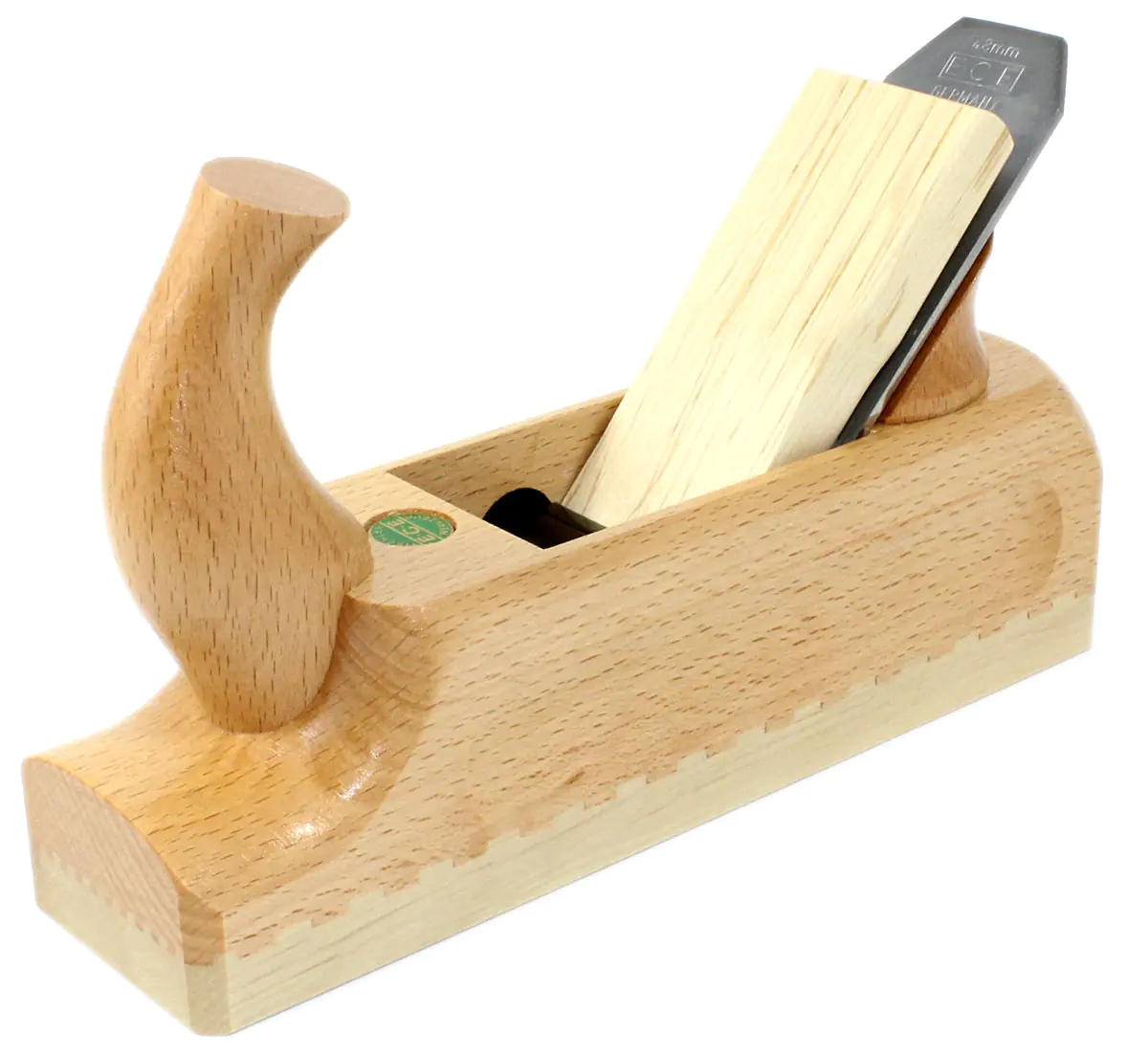Tips for the treatment of ECE quality planes with wedged plane irons
This is the official manual from ECE. © E.C.Emmerich Toolworks, Remscheid, Germany.
E.C.E. planes are equipped with a ready-to-use E.C.E. plane iron of the best quality. Remove the plane iron packaging and set the desired chip removal as follows: Place the plane iron in the plane body so that the sharpened edge is facing the rear part of the plane. The iron should not protrude from the sole of the plane. Insert the wedge and apply pressure with a light hammer blow. Gently drive the plane iron forward with light hammer blows. Occasionally check for alignment (by looking) over the sole of the plane to see if the desired projection of the edge over the sole of the plane has been reached. At the same time, ensure that the edge is parallel to the sole of the plane. If necessary, achieve the parallelism by lightly hammering against the inclined surfaces at the end of the plane iron. For rabbet planes, ensure that the plane iron blade protrudes approximately 0.1 mm laterally beyond the plane body, specifically on the side where you are planing the rabbet. Once the desired edge projection (= thickness of chip removal) is reached, secure the plane iron with an appropriate - not too strong - hammer blow on the wedge. Choose a chip removal between 0.1 and 0.3 mm. Do not set the plane iron too coarsely. Too much chip removal leads to great effort and an unevenly planed surface on the workpiece. If you have set the plane iron too coarsely, apply a few hammer blows to the bare striking button at the back of the plane (at roughing planes on top). This will retract the plane iron. Then check if the wedge is still firmly in place. The grinding of the E.C.E. plane iron is best done on a grinding wheel, wet, to avoid excessive heating. (There are grinding machines specifically for plane irons and chisels on the market). The plane iron edge should be 6.5 to 7 mm long = 25°, it must not be hollow or rounded. The burr created during grinding is removed by honing with water or oil on a flat honing stone. Processes: The side opposite the edge is moved back and forth flat on the honing stone. When honing the cutting edge, do not lay the edge flat, but set the plane iron a bit steeper. This creates a narrow - barely visible - second edge immediately at the cutting edge. The two mentioned processes are alternated and repeated until no burr can be felt at the cutting edge. For plane irons with a flap, always ensure that no shavings can enter between the plane iron and the flap. The plane will "clog" immediately, making further work impossible. To eliminate the error, work the inner side of the flap at the end of the angled part on the flat honing stone so that the flap lies absolutely "tight" on the plane iron.

